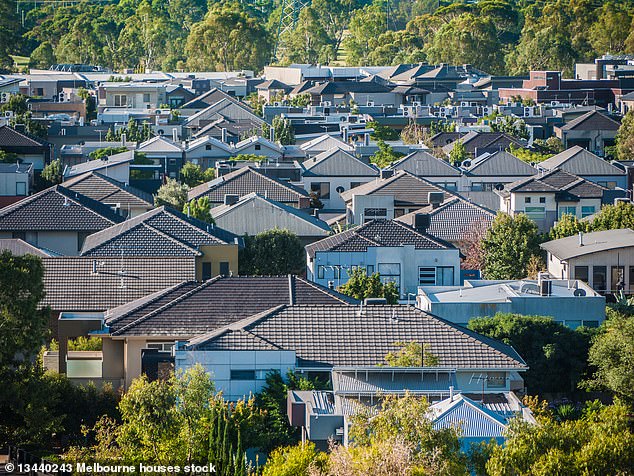The housing price figures no first-home buyer wants to see
- National house prices at record high
- Prices 6.16 percent higher than a year ago
National home prices have hit a new record after 20 months of uninterrupted growth, as sellers enter spring with a big lead.
The Home Price Index from appraisal firm PropTrack shows national home prices are now 6.16 percent higher than a year ago, after hitting a new high of 0.22 percent in August.
The report found that prices in the capital cities together rose by 6.49 percent over the past year, with “demand boosted by strong population growth, tight rental markets and increased equity in homes”.
Prices in the capitals together rose by 6.49 percent last year, after a 0.25 percent increase in August.
But these percentages varied by capital city, with the strongest growth recorded in Perth (+0.79 percent), Hobart (+0.63 percent) and Adelaide (+0.45 percent).
House prices in Sydney rose less sharply during the winter months, despite prices rising by 0.32 percent.
Prices in Melbourne fell by 0.18 percent, marking the fifth consecutive month of price declines.
The report also found that construction activity remains challenging, compounded by a chronic housing shortage.
National home prices have hit a new record after 20 months of consecutive growth – with sellers entering spring with a strong advantage (stock image)

The Home Price Index from real estate appraiser PropTrack shows national home prices are now 6.16 percent higher than a year ago, after rising 0.22 percent to a new high in August (stock image)
“July’s tax cuts have supported price growth and expanded buyers’ borrowing capacity and budgets. At the same time, continued house price growth is likely to motivate many to overcome affordability challenges,” said Eleanor Creagh, senior economist at PropTrack and author of the report.
‘That is why demand for housing remains high, despite affordability constraints and rising prices in large parts of the country.’
House prices are expected to rise as activity picks up in the spring selling season, but this is offset by ‘the expected increase in choice, the uncertainty around the timing of interest’
“Mortgage rate cuts and affordability issues,” said Ms Creagh.
“(They) will likely moderate the pace of price increases,” she said.
Perth, Adelaide and Brisbane have seen the fastest growth of the capital cities over the past two years, with prices in Perth rising by 23.24 percent over the past year.
This was followed by Adelaide (+15.12 percent) and Brisbane (+13.95 percent).
Growth was not limited to regional areas. The report found that prices outside capital cities in regional areas rose by 0.16 percent last month, which is 5.32 percent above the August 2023 level.
Regional Western Australia and regional Queensland led the growth curve in August and last year, with +0.41 percent and +0.26 percent respectively.
But prices in regional Victoria fell 1.74 percent over the same period.
Ms Creagh said the tax cuts from July had increased borrowing capacity and budgets, noting that continued house price growth was likely to motivate people to address affordability issues.
“That is why demand for housing remains high despite affordability constraints and prices are rising in many parts of the country,” she said.
